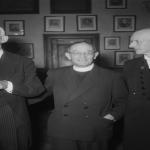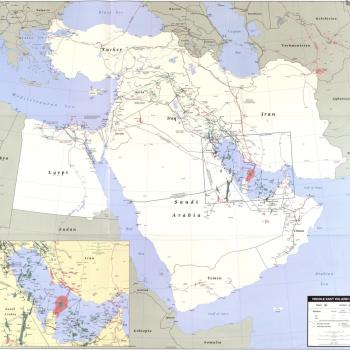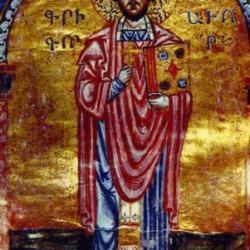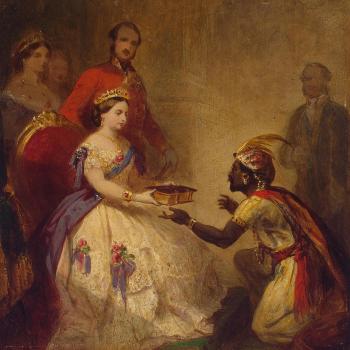Amid the welter of truth claims in the modern academy, one towers above all others: empire and colonialism are bad—universally bad.
Since Edward Said’s landmark Orientalism (1978), study after “post-colonial” study have arrived at this conclusion. Colonizers lorded it over the colonized, exploiting them economically, socially, culturally. The “White Man’s Burden” or Europe’s mission civilatrice were sanctimonious justifications for the ruthless suppression and mistreatment of native peoples in Africa, the Middle East, and Asia. Integral to this outlook is the assumption that Christian missionaries were little more than dupes of colonial power–“imperialism at prayer,” according to one scholar. In the “presuppositions of a Saidian master narrative,” Jeffrey Cox has summed up, “missionaries . . . [are], simply, imperialists; if different from other imperialists, it is because they were marginal, or because they were worse.”
Of course, the outlook contains much truth. Colonialism was often a sinister force and missionaries often abetted its darker aspects. But sweeping narratives of the past usually err not in being wholly wrong, but in reaching farther than their grasp allows. In this case, the role of missionaries and their global legacy today is far more complex than post-colonial theorists have recognized.
Nowhere is this clearer than in an article by Robert D. Woodberry of Baylor University,. His “The Missionary Roots of Liberal Democracy,” published in the American Political Science Review (2012), is among the most highly awarded articles in this prestigious journal’s history. Setting his sights on those who would ignore or contemn missionaries, Woodberry argues that the global activity of “conversionary Protestants” (CPs) from the late eighteenth and to the early twentieth century is a leading cause of the global spread of liberal democracy over against various forms of tyranny and oppression. “CPs,” he argues “were a crucial catalyst initiating the development and spread of religious liberty, mass education, mass printing, newspapers, voluntary organizations, most major colonial reforms, and the codification of legal protections for nonwhites.” These innovations in myriad global mission sites studied by Woodbury in turn “fostered conditions that made stable representative democracy more likely.”
Central to Woodberry’s argument is the Protestant emphasis of sola scriptura. Unlike earlier missions, he claims, Protestant ones emphasized popular literacy and education, two key ingredients for civil society and the emergence liberal democracy. What is more, in their competition for converts, Protestant missionaries regularly reached out to educate lower-class individuals and despised minorities, such as Dalit (“untouchable”) and tribal classes in India—a very different strategy from the Jesuits’ previous focus on elites. In this respect, writes Woodberry, CPs “influenced class structure by dispersing education to women and the poor, making texts widely available, spawning civil society among non-elites and moderating abuses of power—with demonstrable political consequences.”
For their part, minorities and lower-class individuals in colonized areas were disproportionately attracted to Christian notions of human dignity (anchored in teachings of the imago Dei) and the Gospel’s emphasis on spiritual equality. As the Apostle Paul put it in Galatians: “There is no longer Jew or Greek, there is no longer slave or free, there no longer male and female, for all of you are one in Christ Jesus” (Gal. 3:28). As was true in the Roman Empire, conversion to Christianity was often experienced by lower classes as liberation from age-old structures of ostracism and oppression.
Woodberry’s thesis is nuanced. He is well aware that, say, the Lutheran Church in West Africa, the Anglican Church in India and the Dutch Reformed Church in South Africa were often agents of oppression. For this reason, he emphasizes that he is not necessarily talking about all Christians, or even all Protestants, but conversionary Protestants in particular—what the British have tagged “Nonconformists”. While European state churches often reproduced oppressive structures, conversionary Protestants amounted to so many sticks in the wheels of Empire and disrupters of indigenous forms of oppression and complacency toward the poor and marginalized. “Conversionary, non-state religions seem particularly able to undermine elite social reproduction,” he writes. “Elites can monopolize economic, educational, and political resources, but not souls. . . . Elites may restrict public alternatives, but when religious options emerge, marginalized people disproportionately convert. . . . If one religious group provides resources to non-elites, the dominant group must respond or risk losing converts.” Precisely this happened in India: high-caste Hindus began to recognize the plight of “untouchables” only when they began to convert to Christianity en masse, argues Woodberry.
Woodberry summarizes his argument as follows: “Comparative historical analysis shows that CPs consistently initiated and spread factors that past research suggests promote democracy: mass printing, mass education, civil society, and colonial rule of law. In cross-national statistical analysis Protestant missions are significantly and robustly associated with higher levels of printing, education, economic developmental and rule of law and with lower levels of corruption. . . . The historic prevalence of CPs is not the only cause of democracy, but CPs seem both important and neglected in current research. This does not mean that CPs consistently directly supported democracy nor is mass conversion to Protestantism necessary. Yet in trying to spread their faith, CPs expanded religious liberty, overcame resistance to mass education and printing, fostered civil society, moderated colonial abuses, and dissipated elite power. These conditions laid a foundation for democracy and long-term economic growth.”
The article marshals mountains of statistical data, of which I am perhaps not the best person to evaluate. But if its conclusions are true, or even partly true, then the post-colonialist narrative about missionaries would seem to need considerable revision.













